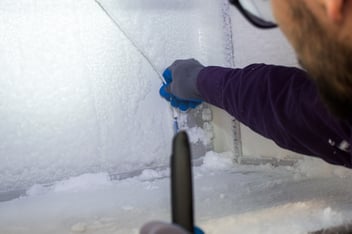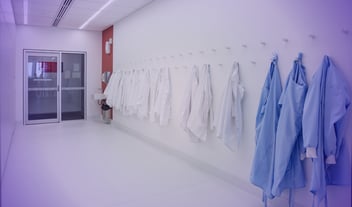

In the pharmaceutical industry, accurate temperature and humidity monitoring of refrigerators, freezers, and storage areas is essential for medication safety and regulatory compliance. However, many pharmacies still rely on manual temperature monitoring methods, which are vulnerable to human error, missed entries, and delayed response times. This article breaks down the key steps of manual monitoring, highlights its limitations, and explains the risks associated with non-automated systems. Learn why more pharmacists are switching to automated temperature monitoring solutions like those from ATEK to improve reliability, streamline compliance, and protect sensitive medicationsSteps of Manual Temperature Monitoring in Pharmacies
- Check Thermometers:
The pharmacist reads the temperature displayed on each refrigerator or freezer thermometer. - Manual Temperature Recording:The temperature is manually written in a paper logbook or entered into an electronic spreadsheet.
- Verify Acceptable Ranges:
Readings are compared against recommended temperature ranges (e.g., 2–8°C for refrigerated drugs, -20°C for frozen items). - Check Humidity Levels:
Humidity is verified against acceptable ranges (typically 30–50% RH for most medications). - Manual Adjustment of Settings:
If temperature or humidity is outside the acceptable range, the thermostat is manually adjusted. - Document Corrective Actions:
Any corrective action is logged along with the time and reason for the deviation. - Notify Supervisor for Critical Deviations:
Any major deviation that may compromise product integrity is immediately reported to a supervisor.
Challenges of Manual Temperature and Humidity Monitoring
- Human Error: Manual entry is prone to omissions, mistakes, or illegible writing.
- Time-Consuming Process: Especially when monitoring multiple units, the process is labor-intensive.
- Delayed Reaction: Deviations may go unnoticed for hours without frequent checks.
- No Real-Time Data: Deviations are often detected only during the next scheduled check, increasing the risk of medication spoilage.
- Inconsistent Monitoring Frequency: Frequency may vary based on staffing levels or workload.
- Inaccurate Readings: Handheld devices or outdated hygrometers may provide unreliable data.
- Reading Fluctuations: Environmental factors like room access or HVAC system activity can affect humidity levels.
- Labor-Intensive Task: Each storage room must be monitored separately, requiring both time and personnel.
- No Automated Alerts: There's a greater risk of missing critical deviations—especially after hours.
- Documentation Burden: Manually recording multiple readings can lead to incomplete or inaccurate records.
Ready to leave manual monitoring behind?Discover how ATEK’s automated monitoring solutions can streamline your workflows, eliminate human error, and ensure the safety of your pharmaceutical products—24/7.Book a demo with an expert today to see how we can help you improve your processes, reduce unnecessary risks, and protect what matters most !
Download Document
Thanks for your interest
Here is the link to download the document
www.atek.com/aoiubviur-5svlfnkvs;d54c3Related articles

Case study: How ATEK's Monitoring System Ensures Cold Chain Safety in ULT Freezers
Securing ULT Freezers: How ATEK's Monitoring System Ensures Cold Chain Safety in a University Laboratory CONTEXT & CHALLENGES

Protect Your ULT Freezers from Heatwaves
As climate patterns shift and heatwaves become more frequent and intense, maintaining the stability of ultra-low temperature (ULT) freezers in...

Securing your Laboratory During Extended Absences [Practical Guide]
Whether for annual leave, external training, or periods of reduced activity, extended staff absences always represent a critical moment for your...
NEWSLETTER
With this newsletter, get a first look at all the latest updates and tips that make a real difference in environmental monitoring!
TRY ATEK FOR YOURSELF
Get a Hands-On Demo & a Risk-Free Trial.
See firsthand how ATEK can make monitoring and compliance effortless while keeping your products safe.
